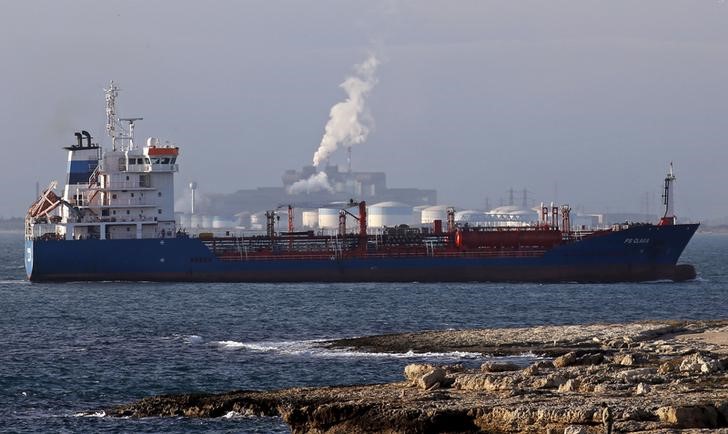* U.S. crude stocks rise unexpectedly, fuel builds sharply - EIA
* Stocks at Cushing see biggest draw since Feb 2018 -EIA
* Investors watch China-U.S. trade negotiations
* OPEC expects small supply deficit in 2020 (Adds settlement prices)
By Collin Eaton (NYSE:ETN)
HOUSTON, Dec 11 (Reuters) - Oil prices dropped almost 1% on Wednesday following a surprise build in U.S. crude inventories, and as investors waited to see if a fresh round of tariffs by Washington on Chinese goods would come into force on Sunday.
Brent futures LCOc1 settled at $63.72 per barrel, down 62 cents. West Texas Intermediate crude CLc1 fell 48 cents to settle at $58.76 per barrel.
U.S. crude stockpiles rose unexpectedly last week, while gasoline and distillate inventories jumped sharply higher, the Energy Information Administration said. EIA/S
Crude inventories rose 822,000 barrels last week, compared with analysts' expectations in a Reuters poll for a 2.8 million-barrel drop. At 447.9 million barrels, crude stocks were about 4% above the five-year average for this time of year, the EIA said.
However, stocks at the Cushing, Oklahoma, delivery hub for WTI fell 3.4 million barrels last week, their biggest decline since February 2018, the EIA said.
U.S. inventories of gasoline jumped 5.4 million barrels and distillates, which include diesel and heating oil, rose 4.1 million barrels - both more than double analysts' expectations.
U.S. gasoline RBc1 and heating oil HOc1 futures were down about 2%.
"The inventory data was rather bearish when you consider the fall in refinery run rates and the cratering of gasoline demand," said John Kilduff, a partner at Again Capital LLC in New York. Gasoline demand "had held up most of the year, quite extraordinarily."
Refinery utilization rates fell 1.3 percentage points last week to 90.6% of total capacity. Finished motor gasoline consumption fell to 8.8 million barrels per day (bpd), the lowest since February, according to EIA data.
Winter storms that brought heavy snows on several U.S. states last week impacted domestic gasoline demand and likely caused inventories to rise, said Phil Flynn, senior energy analyst at Price Futures Group in Chicago.
"People's cars were parked, and you saw a big drop in (fuel) demand. The market is reacting to headline number, but we don't see this as a trend, we see it as a one-off," Flynn said. Organization of the Petroleum Exporting Countries released a more bullish outlook for 2020, forecasting demand for its crude to average 29.58 million bpd next year, less than the group's November output. expectation of a small deficit suggests a tighter market than previously thought. It had initially projected a 2020 supply glut, but U.S. shale output has grown more slowly than expected.
However, U.S.-China trade tensions continue to cloud the outlook for demand, with a Dec. 15 deadline for the next round of U.S. tariffs on Chinese imports approaching. and allied oil producers led by Russia last week decided to deepen supply cuts amid a weak outlook for oil demand growth next year.
But a bullish jolt that followed the agreement appears to have dissipated as demand concerns have emerged again, said Gene McGillian, vice president of market research at Tradition Energy in Stamford, Connecticut.
"The market seems to have stalled. There's uncertainty around fuel demand growth because of the world trade crisis," McGillian said.
